Did you know?
• The Federal CARES Act provided $377 billion for financial assistance to small businesses—generally including businesses and nonprofits with fewer than 500 employees.
• The “three-legged stool” fundraising approach at Eastern Washington University uses private and local fundraising dollars to leverage state dollars.
Lessons Learned from Two Challenging Years
The bumpy ride of the past two years – amid the pandemic and social unrest – has revealed a great deal about fundraising for immediate needs, as well as long-term sustainability and strength.
Nonprofits learned to move quickly in addressing critical needs as donors stepped up with unrestricted gifts they entrusted to organizations for best use. Valley of the Sun United Way used those funds to mobilize weekly rapid response grants that addressed concerns ranging from job loss, evictions and mental health issues to staffing capacity and funeral assistance.
Eastern Washington University, through its unrestricted Student Emergency Fund, distributed hundreds of laptops to students adjusting to virtual classes and addressed food insecurity. The university offered financial incentives for vaccinated students amid the unexpected loss of their former president to sudden illness. Both organizations weathered the storm.
Fast-forward to 2023: Immediate needs for current operations still exist, but federal relief for nonprofits expired, and inflation reared its head alongside stock market volatility. Today, donors are more cautious, and funding intensity has waned as donors return to pre-COVID areas of support. They also expect proof of long-term sustainability and strength from their charities.
How can nonprofits pull off this balancing act?
DIVERSE FUNDRAISING STRATEGIES
Explore Funding Options
Even in a good year, nonprofit revenue sources fluctuate: earned income, contributions, grants, endowment payouts. Executives sitting on nonprofit boards must stay on top of the numbers so that variabilities – expected and unforeseen – can be managed.
“We engage in a rolling budget assessment with our board of directors,” says Carla Vargas Jasa, president and CEO, Valley of the Sun United Way. “Monthly, we look at our revenue and ensure we are never exceeding it. During COVID, and to this day, we make the necessary adjustments.”
Revenue streams influence the types of gifts requested. Donors might be asked to expedite multi-year pledges or operationalize major or planned gifts with annual contributions. Outright vs. planned gifts, or unrestricted vs. designated gifts, in lieu of new initiatives, may make sense.
“We’ve done all those things,” says Vice President of University Advancement for Eastern Washington University Barb Richey. Flexibility is key, she says, and her team is not shy about asking donors to align with the institution’s priorities – current or future. When approaching state lawmakers to support a new nursing school due to statewide shortages, her team – to bolster its case – solicited insurance and healthcare-related companies, foundation grants and individual donors. The pandemic hit, however, drying up corporate funding sources. “We had no donor base, either,” explains Richey, “because alumni from our pre-nursing program gave to the institutions where they’d completed their degrees.”
Still, the University rallied. “Our interim president offered an initial start-up gift, and we went directly to trusted ‘family’ donors, raising $1 million. Our first 40 nursing students start this year.” In the next year, corporations and foundations will, again, be solicited.
United Way also worked toward sustainable funding while juggling COVID’s immediate needs. “While responding to immediate challenges, we were emboldened to set big goals because we received a $25 million grant from McKenzie Scott,” says Vargas Jasa of the plan to double their organization’s endowment and fundraising efforts over five years. “When that five-year grant is expended, we will need the additional endowment and fundraising dollars to maintain our level of support in the community.”
Be Transparent.
Donors want to invest in winners – successful nonprofits that address current issues and have immediate impact, but also plan for future sustainability and strength. When donors are part of this planning, great things can happen.
During the pandemic, an anonymous couple ‘blind shopped’ a number of universities in Washington and Oregon, walking campuses, talking to students, assessing which schools created the best sense of family for its students. They later selected EWU as a recipient of a $3.5 million gift to create forty-five $6,000 scholarships for students challenged by juggling work and learning demands.
“That couple has been brought in to make key decisions,” says Richey. “They’re very hands-on; they hold us accountable, and we hold ourselves accountable to them.” To assess the efficacy of the programs they funded, the couple regularly receives university data. “The past few years have increased transparency,” says Richey.
Plan for Strength, Stability.
As they look to the future, Richey and team are in the silent phase of the university’s first-ever comprehensive campaign while simultaneously addressing enrollment decline through a strategic resource allocation model to assess the most- and least-fruitful programs.
“There’s no silver bullet for any organization,” says Vargas Jasa. “We’re never going back to the way things were. Nonprofits need to continue to be flexible, responsive, and proactive in balancing short-term needs with long-term strength and opportunity.”
THE EVOLVING PHILANTHROPIST
Today’s donors are more sensitive to issues of financial sustainability because they witnessed nonprofits struggle over two years of challenge. They also:
- Want options. Most donors don’t simply want to write a check and walk away. At Valley of the Sun United Way, donors are given options on how to support the organization. “We’re taking a two-pronged approach and letting donors know they can meet short-term needs with annual gifts, or help ensure the stability of the organization by making an endowment gift,” says President and CEO Carla Vargas Jasa.
- Are more into planning. “During COVID, people looked at their estate planning and wills, specifically,” says Barb Richey, vice president of university advancement for Eastern Washington University. “We’re seeing an increased interest in planned gifts, and as a result, hired a full-time position to serve this market.”
Richard Tollefson is founder and president of The Phoenix Philanthropy Group, an Arizona-based international consulting firm serving nonprofit organizations as well as institutional and individual philanthropists.
